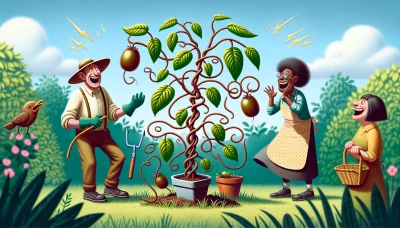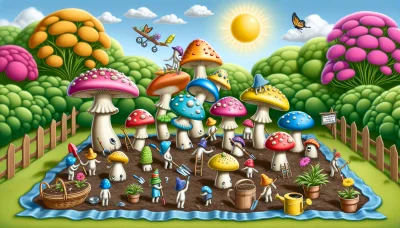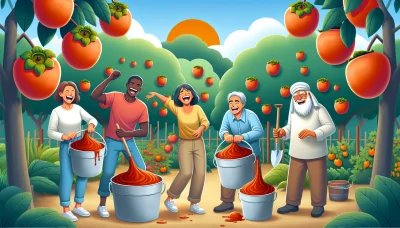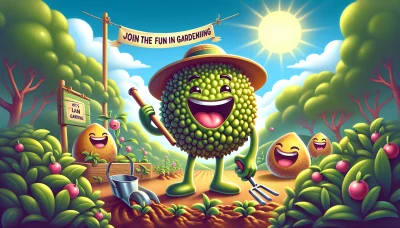What are pitted dates Quiz
Test Your Knowledge
Question of
What Are Pitted Dates?
Pitted dates are a form of dates that have had their pits or seeds removed, making them ready to eat without any additional preparation. In the context of gardening and cultivation, pitted dates are not directly relevant as they are a processed form of the fruit primarily meant for consumption. However, understanding the process and significance of dates in agriculture can provide insights into their cultivation. Dates are grown on date palms, and their cultivation is a long-term investment, as these trees can take 4 to 8 years to bear fruit. The process of pitting dates is purely for culinary and consumption purposes, whereas the cultivation of date palms focuses on the growth and health of the trees, ensuring they produce high-quality fruit. Gardeners and cultivators must pay attention to climate, soil, and water needs of date palms to successfully grow this nutritious and sweet fruit.
The Cultivation Process of Date Palms
Date palms are one of the oldest cultivated trees in the world, known for producing the sweet and nutritious fruit known as dates. The cultivation process of date palms is intricate and requires careful planning and execution to ensure a healthy growth and fruitful yield. This process begins with the selection of high-quality seeds or offshoots from mature date palms.
For seed propagation, an important step in the cultivation of date palms involves the removal of pits from the dates. This is crucial as the pits contain the seeds needed to grow new date palm trees. Once the pits are removed, they are cleaned and often soaked in water for a period of 1-2 days to enhance germination rates. After soaking, the pits are planted in well-draining soil, ensuring that they are placed at the correct depth to facilitate proper growth.
The germination of date palm seeds can take several weeks, and during this time, it is essential to maintain optimal soil moisture and temperature conditions. Once the seedlings emerge, they require careful nurturing, including regular watering, fertilization, and protection from pests and diseases. As the seedlings grow, selecting the healthiest plants for further cultivation becomes crucial.
In addition to seed propagation, date palms can also be grown from offshoots, which are essentially clones of the mother plant. This method is preferred for commercial cultivation as it ensures uniformity in fruit quality and yield. Offshoots are carefully removed from the base of a mature date palm and then transplanted to a prepared site, where they are nurtured until they establish themselves and begin producing fruit.
The cultivation of date palms is a long-term commitment, as it can take several years for the trees to reach maturity and start bearing fruit. However, with proper care and maintenance, date palms can produce fruit for decades, making them a valuable and rewarding crop for growers.
Benefits of Growing Pitted Dates
- Low Maintenance Requirements: Pitted dates require minimal water and can thrive in arid conditions, making them ideal for sustainable farming.
- Disease Resistance: These plants are notably resistant to many common pests and diseases, reducing the need for chemical treatments.
- Extended Harvest Season: Pitted dates can be harvested over a longer period, ensuring a steady supply of fruits throughout the season.
- High Nutritional Value: Dates are a great source of fiber, vitamins (such as B6), and minerals like potassium and magnesium, supporting overall health.
- Energy Boosting: The natural sugars in dates provide a quick and healthy energy boost, making them a perfect snack for active individuals.
- Heart Health: Regular consumption of dates has been linked to improved heart health due to their high potassium content and antioxidant properties.
- Soil Improvement: The deep root systems of date palms can help improve soil quality and prevent erosion in garden areas.
- Shade and Beauty: Date palms can provide natural shade and add aesthetic value to gardens with their majestic appearance.
Step-by-Step Guide to Planting Pitted Dates
- Select Your Dates: Choose fresh, plump dates for planting. Avoid dried or shriveled fruits as their germination rate is low.
- Extract the Seeds: Carefully open the date fruit to remove the pit without damaging it. Clean the pit with water to remove any sticky fruit residue.
- Germination Process: Soak the cleaned pits in water for 48 hours to soften the outer layer. Change the water frequently to prevent mold.
- Plant the Seeds: Fill a pot with well-draining soil mix. Plant the soaked pits about 1 inch deep into the soil and water lightly.
- Provide Warmth: Date palm seeds need warmth to germinate. Keep the pot in a warm, sunny spot or use a heat mat to maintain a consistent temperature.
- Watering: Keep the soil moist but not waterlogged. Overwatering can cause the seeds to rot.
- Wait for Germination: It can take several weeks to a few months for the seeds to germinate. Be patient and keep the soil conditions consistent.
- Transplanting: Once the seedlings have grown a few inches tall and have several leaves, they can be transplanted into larger pots or directly into the ground, depending on your climate.
- Continued Care: Date palms require full sun, well-draining soil, and regular watering. Fertilize young plants during the growing season for the best growth.
- Patience is Key: It can take several years for date palms to start producing fruit. Continue to care for your plant, and with time, you'll enjoy the rewards of your efforts.
Common Challenges in Growing Date Palms
Growing date palms can be a rewarding experience for any gardener, but it comes with its share of challenges, particularly when it comes to diseases and pests. Understanding these common issues can help in effectively managing and overcoming them, ensuring the healthy growth of your date palms.
One of the primary diseases affecting date palms is Bayoud disease, caused by the fungus Fusarium oxysporum. This disease leads to the wilting and eventual death of the palm. To combat Bayoud disease, it's crucial to use disease-free planting material and ensure proper water drainage to prevent the fungus from thriving. Additionally, removing and destroying infected palms can help prevent the spread of the disease.
Another significant challenge is the Red Palm Weevil, a pest that burrows into the trunk of date palms, causing severe damage and often leading to the death of the palm. Early detection is key to managing this pest. Regular monitoring of the palm for signs of infestation, such as holes in the trunk or frass (sawdust-like material), can help in early identification. Once detected, infested palms should be treated with appropriate insecticides or, in severe cases, removed to prevent the spread of the weevils to nearby palms.
Date palms are also susceptible to Leaf Spot diseases caused by various fungi, which can lead to reduced photosynthesis and weakened palms. To manage Leaf Spot diseases, ensure your palms are well-spaced to improve air circulation and reduce humidity around the leaves. Applying fungicides can also be effective in controlling the spread of these diseases.
In conclusion, while diseases and pests pose significant challenges to growing date palms, proper care, and management practices can mitigate these issues. Regular monitoring, using disease-free planting materials, ensuring good air circulation, and prompt treatment of affected palms are crucial steps in overcoming these challenges and ensuring the healthy growth of your date palms.
Harvesting and Storing Pitted Dates
Harvesting and storing pitted dates properly is essential for maintaining their quality and freshness. Dates should be harvested at the right time, which is usually when they are fully ripe and have a deep brown color. It's important to handle the dates gently during harvesting to avoid bruising them.
After harvesting, dates should be washed carefully to remove any dirt or debris. They should then be dried thoroughly to prevent mold growth. For drying, you can lay them out in a single layer under the sun for several days or use a dehydrator at a low temperature. Make sure the dates are completely dry before proceeding to the next step.
Once dried, pitted dates can be stored in airtight containers. For short-term storage, placing them in a cool, dry place is sufficient. However, for long-term storage, refrigerating or freezing the dates is recommended. When stored in the refrigerator, dates can last for several months, while freezing can extend their shelf life to up to a year or more. Ensure the container is sealed properly to prevent moisture from entering, which can lead to spoilage.
It's also a good practice to check the stored dates periodically for any signs of spoilage and consume them within the recommended time frame to enjoy their best quality. By following these best practices, gardeners can ensure their harvested dates remain delicious and nutritious for longer.
Recipes and Uses for Home-Grown Pitted Dates
| Recipe/Use | Ingredients | Instructions |
|---|---|---|
| Date Walnut Bread | Pitted dates, walnuts, flour, eggs, sugar | Mix chopped dates and walnuts into the batter. Bake until golden. |
| Date Smoothie | Pitted dates, banana, almond milk, cinnamon | Blend all ingredients until smooth. Serve chilled. |
| Stuffed Dates | Pitted dates, cream cheese, almonds | Fill each date with cream cheese and top with an almond. |
| Date and Nut Energy Balls | Pitted dates, oats, nuts, honey | Pulse ingredients in a food processor. Roll into balls and chill. |
| Chocolate Covered Dates | Pitted dates, dark chocolate, sea salt | Dip dates in melted chocolate, sprinkle with sea salt, and let set. |












